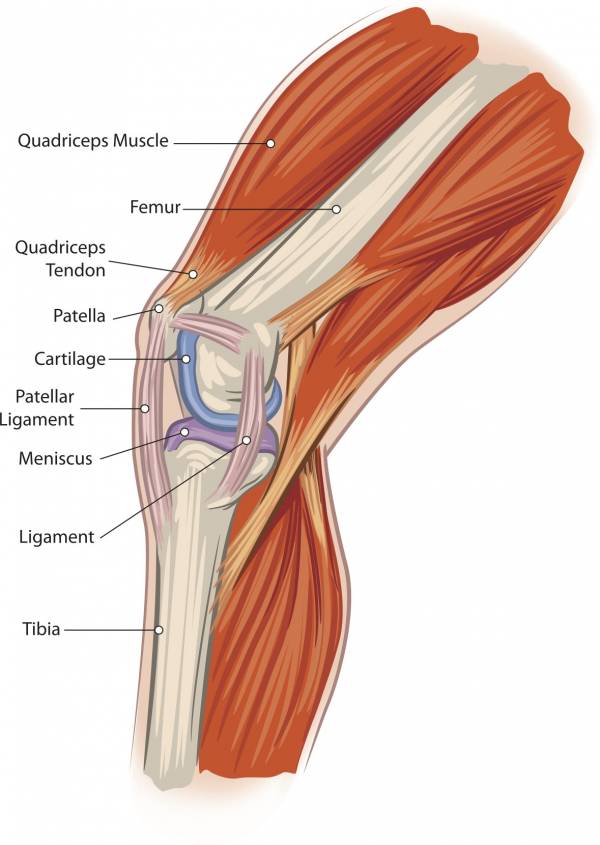Flexibility, or should I say “bendy-ness” is glorified, when in fact the goal should be balance. As in, appropriately mobile, but not hypermobile. For those of you reading this who are, like me, naturally built like a brick shit house (I have earned both the nickname Thick Tissue Mama and Quadzilla at different times in my life), I appreciate your eye roll.
We tight-tissued folk don’t exactly have to worry about magically becoming hypermobile. We all have been told “tight” equals “bad” and so we work on flexibility in the hopes that we can enter the anointed realm of The Bendy. Oh, if only we could instantaneously drop into a full split, then we would be living the good life!
Really? Are those people at your gym who are flopping their torsos down onto the floor in a spread leg forward fold actually experiencing less pain and discomfort in their bodies? And did they get there through conscientious effort? Effort that you – oh, Shameful Tight One – have lacked the discipline to follow through on? Usually not.
Let’s look at both points one at a time because understanding which tissue type you are – whether you are in the tight or the bendy camp – will help you to know how to navigate your way to balance. Ah, balance, the magical place where less pain, fewer injuries, and more power lives. We like this place.
Do the Naturally Super-Flexible Feel and Perform Better in Their Bodies?
In my Rolfing practice, I hear over and over again from the hypermobile types that being super flexible was really fun as a kid (who doesn’t like freaking out their friends by wrapping their legs behind their head after all?), but that as they age they experience more persistent and pervasive pain from chronic joint hypermobility, and are more easily susceptible to slow healing sprains and osteoarthritis. They often feel like an eighty-year-old long before they get there, and also feel as if they are moving cautiously all the time to avoid something going “out,” which is just their term for their experience of joint instability.
 Unfortunately, the people who are in this condition often wind up this way because their hypermobility was praised as a virtue during formative years, and so they participated in activities that encouraged yet more hypermobility like some forms of yoga, gymnastics, and dance. Sadly, it leaves them feeling like crap no matter how pretty the shapes are that they can make. Had balance and integrity been praised over contortionism, they would likely be able to age with much less angst. (All hope is not lost. Hang in there with me. We’re getting there.)
Unfortunately, the people who are in this condition often wind up this way because their hypermobility was praised as a virtue during formative years, and so they participated in activities that encouraged yet more hypermobility like some forms of yoga, gymnastics, and dance. Sadly, it leaves them feeling like crap no matter how pretty the shapes are that they can make. Had balance and integrity been praised over contortionism, they would likely be able to age with much less angst. (All hope is not lost. Hang in there with me. We’re getting there.)
Sometimes the bendy people who are having physical problems as a result of it are characterized as having joint hypermobility syndrome, which leads, as I mentioned above, to pain, a higher incidence of dislocations and sprains, and a higher incidence of osteoarthritis (which happens from the over-mobile joints sliding around and damaging tissue). Ouch.
In joint hypermobility syndrome (don’t let the word “syndrome” irritate, this is basically just a label for the common experience of hypermobility) the ligaments, which basically function as the strapping tape of our joints by connecting bone to bone, are considered the problem for being too loose. This is indeed a problem, as ligaments have no recoil property. Meaning, they don’t bounce back from their end range. Imagine the difference between a rubber band and Silly Putty. Stretch out the elastic and “boing!” back it goes. Stretch out the Silly Putty and you have stringy globbery-goop. This is the trouble with hypermobility, and why it shouldn’t be glorified.
 Fortunately, we are not just a bunch of parts. We are a unified organism. So, if your ligaments are too loose, you have a whole lot of other soft tissue to help you out with support, provided they have the opportunity to come into balance. Remember those things we love to talk about called muscles? Their job is actually to determine appropriate range for a joint (i.e. where the bones get to go). This means if they are functioning in a balanced way, the ligaments do not need to take on a load. And our muscles weave into the bones via tendons, and all of this is living in a sea, inside and out, of fascia. So you’ve got oodles of support if you can find your way to balance. (More on finding balance soon.)
Fortunately, we are not just a bunch of parts. We are a unified organism. So, if your ligaments are too loose, you have a whole lot of other soft tissue to help you out with support, provided they have the opportunity to come into balance. Remember those things we love to talk about called muscles? Their job is actually to determine appropriate range for a joint (i.e. where the bones get to go). This means if they are functioning in a balanced way, the ligaments do not need to take on a load. And our muscles weave into the bones via tendons, and all of this is living in a sea, inside and out, of fascia. So you’ve got oodles of support if you can find your way to balance. (More on finding balance soon.)
Did They (the Bendy) Get There Through Conscientious Effort?
In reality there is a gray scale of tissue density from the tight to the bendy. Why do some of us get nicknames like Thick Tissue Mama while others earn the nickname Gumby? It’s tough to say, though certainly genetics plays a role (even including genetic diseases in more extreme cases like Ehlers Danlos or Marfan syndrome). Probably a sedentary lifestyle and food also play some role, but I just can’t seem to find straight up information on why we come in a range of tissue densities as humans. But we do.
The important thing to know is that no matter which flavor you came in, it doesn’t mean you’re doomed. While the people who consider touching their toes to be an impossible task probably won’t be competing in the National Yoga Competition (yoga as a competition in contortionism still blows my mind), and the people who are competing yogis (sorry, again, combining “yoga” with “competition” just gets me) will likely never lack for a close-up view of their shins in a forward fold, we can all nudge the needle of where we start. And if we do it with the goal being integrity and balance, then we can arrive at a place of less pain, fewer injuries, healthier joints, and more powerful movements.
For the Tight People:
 Move in varied ways: Whether it’s while working out or in your day-to-day life (hello, butt in chair!), you become the shapes and movements you make most of the time. To avoid congealing into yourself, broaden your movement repertoire. Stand or sit on the floor for part of your workday, go climb a tree, juggle some kettlebells – just take yourself out of whatever is your norm and explore.
Move in varied ways: Whether it’s while working out or in your day-to-day life (hello, butt in chair!), you become the shapes and movements you make most of the time. To avoid congealing into yourself, broaden your movement repertoire. Stand or sit on the floor for part of your workday, go climb a tree, juggle some kettlebells – just take yourself out of whatever is your norm and explore.- Manipulate the fascia: Whether you choose to work with a manual therapist who practices one of the forms of fascial manipulation (Rolfing, Structural Integration, and Myofascial Release come to mind), or you choose to work with a method of self myofascial release (like Yoga Tune Up and MELT), you’ll want to hydrate that tissue and get your structures back to gliding on one another instead of sticking to one another.
- Don’t “punch holes” in your system: I had a Rolfing instructor years ago who used to describe spot tissue work as akin to “punching holes” in the system. There are no “holes” to punch out, but what his analogy is getting at is that it does contribute to imbalance if you just keep hammering away at the same place. So if you do work on yourself, don’t decide that one part of you is the “tight”, i.e. “bad,” part and just ream the hell out of it every time you do tissue release. Your IT bands really don’t need that much punishment. We’re connected, remember, so work your whole self and mix it up.
For the Bendy People:
- Avoid what harms you: Skip out on classes with teachers who want you to be your bendiest self, and skip highly repetitive or sharp, cutting movements as well.
- Pull yourself together: When moving, instead of yearning to pull out and away from your midline into stretches, think about shoring yourself up into your midline and into your joints.
- Turn your attention on: In many ways you have the harder job because you have to utilize very focused attention when you are moving and learn how to appreciate the small ranges. People who are hypermobile also tend to lack the proprioception that tells them when they are going too far in a joint, as in, there is no sensation that says, “Stop!” So you have to tune deeply into yourself and learn what an end range of movement actually is for you, because you have likely been blowing way past it for years.
- Get a teacher: On that note, when you lack a feedback loop that easily tells you what you’re up to in your joints, having a movement educator or trainer who can work with you to tell you when to stop and to shine a light on your body blind spots can be invaluable. Be sure to work with someone who gets that you need to build integrity in your joint ranges. Unfortunately our glorification of bendy means that many teachers subscribe to the “more is better” philosophy of flexibility. Restorative Exercise is a great system for learning your own appropriate, healthy biomechanics.
Photos courtesy of Shutterstock.






